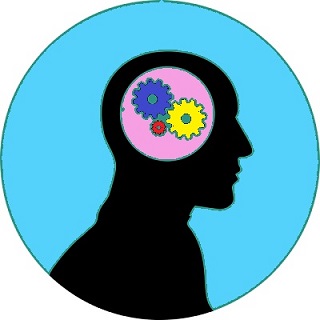| Back to Back Issues Page |
 |
|
English Detective #28, How our brains process language: December 17, 2013 December 16, 2013 |
NPR has a fascinating podcast on research showing that the brain responds to sensory language the same way it does when someone actually sees or touches an object.

Your First Clue: Vocabulary Emphasized in this Issue
Review words from the AWL: accurate, arbitrary, capacity, distribution, intermediate, intervention, simulation, symbol, vision. New vocabulary: metaphor, texture A Few Notes about the Vocabulary:
'Accurate' measurements are both correct and exact. Accuracy is very important in brain surgery or accounting, whereas approximations or estimates are good enough for getting a general idea about a subject. ‘Arbitrary’ means chance or random. An arbitrary decision is based on simple chance or a momentary feeling rather than careful planning. An arbitrary government makes decisions based on whatever the ruler feels like, without considering the needs of his people. ‘Intermediate’ means middle or a mid-level between low and high. There are intermediate English classes for people who have learned basic English but are not ready for advanced classes. Intermediate or middle-grade gasoline is between the least and most expensive. Intermediate cars are middle-sized or in the middle price range: between compacts and SUVs or between very inexpensive cars and luxury models. A 'metaphor' is a comparison we make by saying something ‘is’ something else: “You are my sun” or “he’s a snake” or “the moon is the north wind’s cookie” (from a poem referring to how it gets smaller each night for half a month.) To ‘simulate’ is to imitate or act like someone or something else. Simulations are often used for practice or to give the feeling of a real experience without the cost and the risk. For example, a flight simulator is a machine that lets pilots practice flying. When a pilot operates its controls, it responds the way a plane would, although it remains on the ground. War games let generals simulate real battles and try out strategies without risking the lives of their troops. Virtual reality games are also simulations. A ‘symbol’ is something that represents a greater reality. A heart shape is a symbol of love. Flags are symbols of their countries. Many plants and animals are also used symbolically: the maple leaf stands for Canada, the bald eagle for the U.S., and an elephant for the Republican Party. ‘Texture’ is what the surface of something feels like: smooth, rough, prickly, or bumpy. (Think how different the surfaces of an apple and a pineapple feel, or silk and burlap.) The adjective is ‘textural.’ ‘Vision’ is the sense of sight. We also use the word vision metaphorically to mean a deep understanding of life or an ideal for a better world in the future. Follow the Clues (Vocabulary Practice):
To practice recognizing words related to language and neuroscience research, try circling the words in this word search puzzle. Check the answers here. (You can download them by right-clicking.) If you haven't already seen it, there’s a discussion of metaphors, as well as a matching game using words that show similarities or differences, at Roots of Comparison. You can also review English vocabulary related to “seeing and showing” at Art Vocabulary. A note if you get gmail: Have you missed any issues of English Detective? If you find English Detective in your Promotions box, you can move it to your Primary box (if you want) by clicking on it and dragging it there. Then click Yes when asked if you want to always get it in the Primary box. Coming in the next issue: Using English-- and Valuing Other Languages too. P.S. If youare not already getting English Detective, you can subscribe by completing the form here. (It's free!) |
| Back to Back Issues Page |